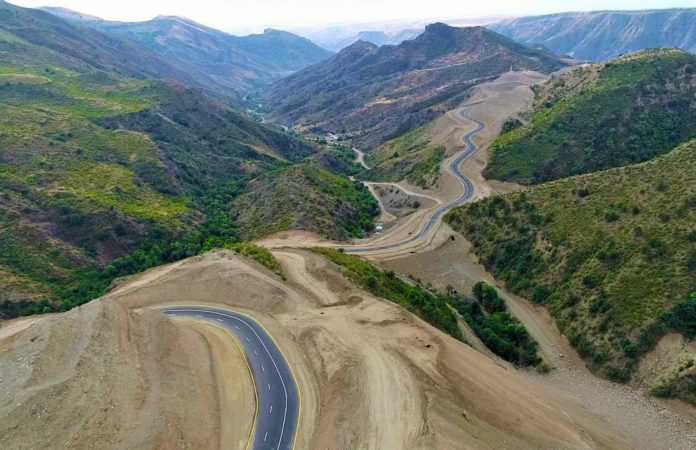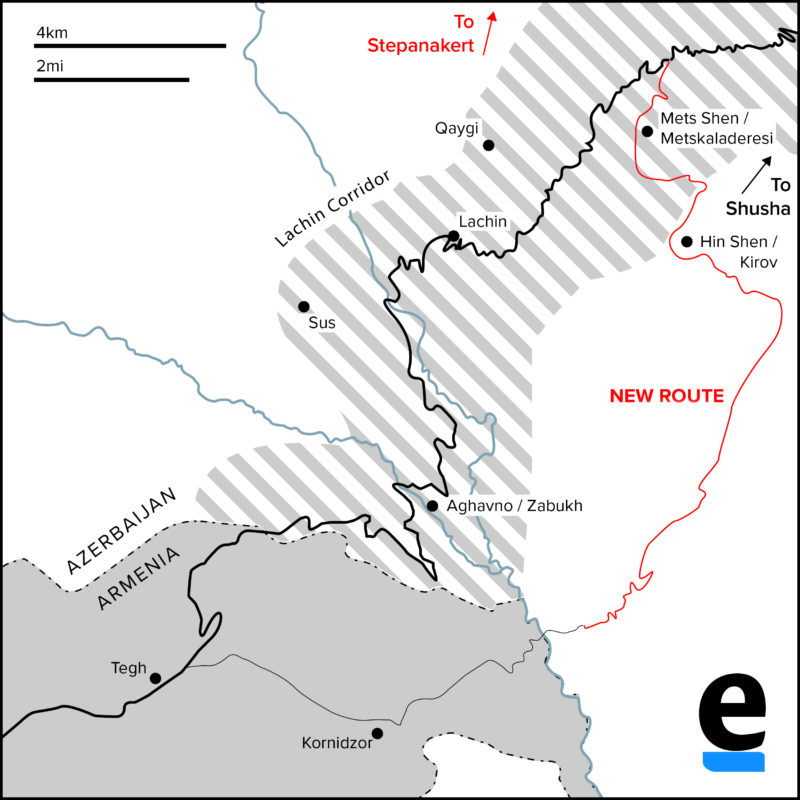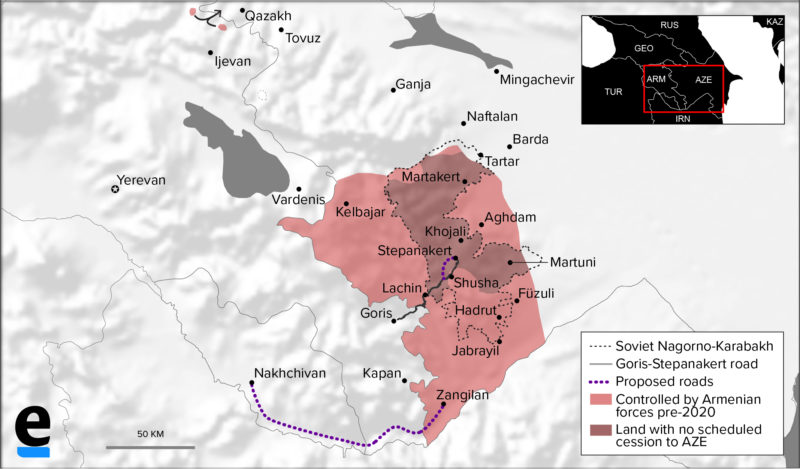By Lilit Shahverdyan, Joshua Kucera
For nearly 25 years, traffic between Armenia and Nagorno-Karabakh traveled along a road known as the Lachin Corridor. It was constructed in 1998, shortly after Armenians won the territory in a war with Azerbaijan, and funded by Armenian diaspora members with money raised at a telethon. Since then, it has represented a critical lifeline for the Armenian residents of Karabakh.
On August 30 at 8 p.m., that road was closed, and traffic was immediately diverted to a new road roughly parallel to the old one, but slightly to the south. Called simply “the new road” by residents, this one has been constructed mostly by Azerbaijan, which retook the territory as part of the ceasefire agreement that ended the second war between the two sides in 2020.
The future of Armenians’ presence in Karabakh is precarious: Armenia appears to be heading toward signing a peace agreement that would cede control of Nagorno-Karabakh to Azerbaijan, which the current ethnic Armenian residents of the territory fear would lead to their ethnic cleansing.
For now, though, they have a new, modern road to travel between Armenia and Karabakh.
In a promotional video celebrating the construction by Azerbaijan’s state road agency, the narrator identified it as “the new highway that does not enter the city of Lachin.” That is the regional capital [Berdzor in Armenian] that the old road went through, and which Azerbaijan recently retook with great fanfare.











